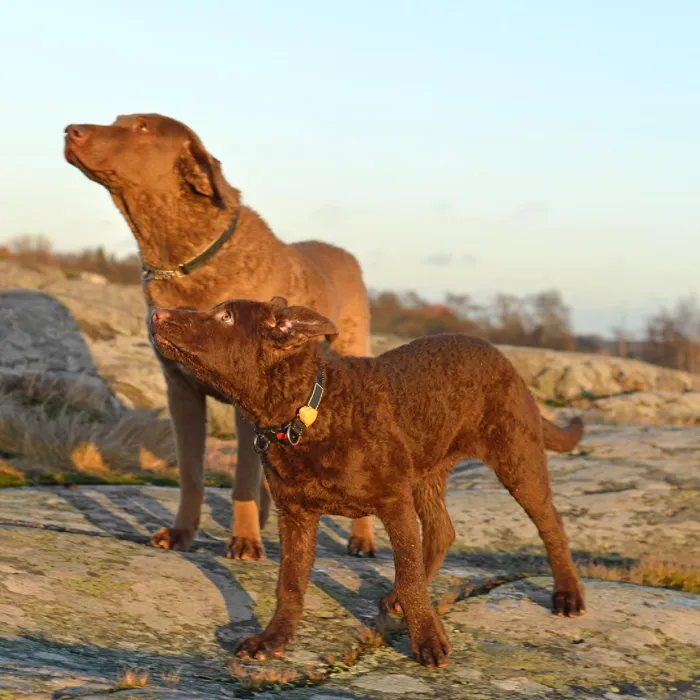Chesapeake Bay Retriever

The Chesapeake Bay Retriever, peerless duck dog of the Mid-Atlantic, is an American original who embodies the classic traits of a good retriever: loyal, upbeat, affectionate, and tireless. The Chessie is famous for his waterproof coat.

Ask About Chesapeake Bay Retriever ?
Breed Traits
General Appearance
Equally proficient on land and in the water, the Chesapeake Bay Retriever was developed along the Chesapeake Bay to hunt waterfowl under the most adverse weather and water conditions, often having to break ice during the course of many strenuous multiple retrieves. Frequently, the Chesapeake must face wind, tide and long cold swims in its work. The breed's characteristics are specifically suited to enable the Chesapeake to function with ease, efficiency and endurance. In head, the Chesapeake's skull is broad and round with a medium stop. The jaws should be of sufficient length and strength to carry large game birds with an easy, tender hold. The double coat consists of a short, harsh, wavy outer coat and a dense, fine, wooly undercoat containing an abundance of natural oil and is ideally suited for the icy rugged conditions of weather the Chesapeake often works in. In body, the Chesapeake is a strong, well-balanced, powerfully built animal of moderate size and medium length in body and leg, deep and wide in chest, the shoulders built with full liberty of movement, and with no tendency to weakness in any feature, particularly the rear. The power though, should not be at the expense of agility or stamina. Size and substance should not be excessive as this is a working retriever of an active nature. Distinctive features include eyes that are very clear, of yellowish or amber hue, hindquarters as high or a trifle higher than the shoulders, and a double coat which tends to wave on shoulders, neck, back and loins only. The Chesapeake is valued for its bright and happy disposition, intelligence, quiet good sense, and affectionate protective nature. Extreme shyness or extreme aggressive tendencies are not desirable in the breed either as a gun dog or companion. Disqualifications: Specimens that are lacking in breed characteristics should be disqualified.
Head
Neck, Topline, Body
Forequarters
Hindquarters
Coat
Color
Size, Proportion, Substance
Tail
Gait
Temperament
Disqualifications
Group
Sporting
About
History
Standard
Nutrition
Grooming
Exercise
Training
Health
All pets have found there homes! Sign up to be notified when new pets are added so you don't miss out.


